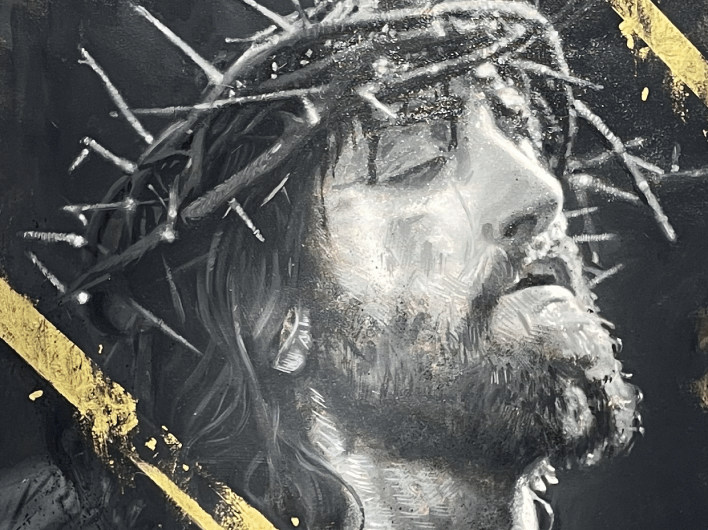ABSTRACT: The recent Sony World Photography Award sparked a heated debate among photographers and artists worldwide. Boris Eldagsen’s winning entry in the creative photography category was met with controversy after he revealed that it was created using an artificial intelligence image generator. In this article, I will explore how competitions can adapt to the evolving digital art landscape shaped by AI (Artificial Intelligence). What factors must be considered? Is establishing distinct criteria for AI necessary? Should AI be viewed solely as a creative tool or as a work of art? The importance of addressing these issues cannot be overstated. During my tenure as the chair of the panel of judges for the Vision Petron National Student Art Competition’s Digital Art Category in March of this year, we faced certain nuanced issues. The fact that AI is now involved in the creation process created apprehension among the panel. In this paper, I aim to delve into crucial discussions in this field and their impact on photography and digital art competitions. It is important to recognize the unique characteristics that AI brings to the creative process and consider how these should be evaluated. As AI becomes more prevalent in the creation of visual art, it is likely that we will see new forms emerge. Competitions must be prepared to adapt to these changes and embrace innovation in the field. Keywords: promptography, digital art competitions, controversy, AI-generated image, Sony World Photography Award, AI image generator, photorealistic imagery Controversy Erupts Over AI-Generated Image Winning Prestigious Photography Award On April 13 in London, Berlin-based German photographer Boris Eldagsen was awarded the prestigious Creative Photography category of the 2023 Open Competition of the Sony World Photography Award. His winning entry, titled Pseudomnesia: The Electrician, was created using DALL-E 2, an AI image generator developed by OpenAI. Figure 1 Boris Eldagsen’s Pseudomnesia: The Electrician Eldagsen’s aim was to challenge the contest and spark discussion about a technology that has the potential to alter our perception of photorealistic imagery. After the announcement, he declined to accept the award, leading to a strained relationship between him and the organizer. Despite not being invited, Eldagsen took the stage during the ceremony to address the audience. He said AI images are not photographs and therefore should not be considered in competitions designed for camera-based practitioners. On his website, Boris stated that the judges lacked the ability to differentiate between photographic images and those generated by AI machines. He argued that his creations are not photographs but “images” artificially synthesized with photographic elements as visual language (2023). The disclosure raised multiple inquiries regarding the characteristics of artwork produced by AI and raised doubt about the definition of photography, whether it should be distinguished from its medium. The photographer expressed disappointment stating, “photographic language has dissociated itself from its medium, which is disheartening for photography because AI now defines the future of the field” (Fotopodden, 2023). According to World Photography Award officials, they are aware that the image is AI generated. The Creative Photography category in its tradition has always been open for experimentations. A spokesperson for the Sony World Photography Awards clarified: During our various exchanges with Boris Eldagsen ahead of announcing him as the Creative category winner in the Open competition on 14 March, he had confirmed the ‘co-creation’ of this image using AI. In our correspondence he explained how following ‘two decades of photography, my artistic focus has shifted more to exploring creative possibilities of AI generators’ and further emphasizing the image heavily relies on his ‘wealth of photographic knowledge’. As per the rules of the competition, the photographers provide the warranties of their entry (artforum, 2023). The officials of the Award have announced the suspension of all activities with him, citing his deliberate attempts to mislead them, which has rendered the warranties he provided invalid. Eldagsen, on the other hand, contests this assertion and maintains that he participated as a cheeky monkey. He stated: I opted to submit an image that was artificially created. I saw myself as a hacker attempting to uncover weaknesses in the system. My intention was not to exploit the competition, but rather to highlight an area in need of attention (Eldagsen, 2023). The controversy surrounding Eldagsen’s entry has sparked an intense debate within the photography community. Some argue that AI-generated images should not be allowed in photography competitions, while others believe that the use of technology is essential for the evolution of the art form. In the advent of photography, artists had similar apprehensions like today with AI, in his website Derek Murphy noted: “Baudelaire called photography the refuge of failed painters with too little talent. Van Gogh said photographs could never capture that human spark, so he started focusing more on painting portraits” (Murphy, 2022). Eldagsen’s actions have also raised questions about the responsibility of artists and creators to disclose the use of AI in their work. While some feel that it is important to be transparent about the tools and techniques used, others argue that the focus should be on the outcome and the impact it has on the viewer. While John Lennox puts it in his book titled 2084: “The real problem with AI, then, is . . . the likelihood of our blindly depending on machines, lulled to trust them by bad metaphors. The danger is that computers will fail us and do so in bad ways”(2020). Regardless of where one stands on the issue, the use of AI in art and photography will continue to be a hotly debated topic in the years to come. As technology advances and artists push the boundaries of what is possible, it will be the responsibility of organizations such as the Sony World Photography Awards to navigate these uncharted territories and establish definitive criteria for participation in their competitions. Navigating the Intersection of Photography and AI in Competitions One of the most significant concerns surrounding the use of AI in photography competitions is the ethical implications. AI can be used to


